Can you steam butternut squash for baby food
Butternut Squash Puree Recipe for Baby | 6 months +
- Log in/Register
Contains:
-
No Allergens
Suitable for:
-
Vegan
-
Vegetarian
-
No dairy
-
Gluten free
Method
Step 1
Wash, peel and chop the butternut squash, discard the seeds. Steam until soft (approx. 20-30mins), either using a steamer or by placing in a colander over a pan of simmering water and covering (you could boil the butternut squash instead, if you prefer).
See recipe notes
This is one of our favourite butternut squash for baby recipes! Once you and your little one feel comfortable with plain butternut squash baby food, start introducing gentle tastes and flavours to our butternut squash puree. Baby will love trying new herbs and spices!
step 1/2
Method
Step 2
In a bowl, blend the butternut squash to a smooth puree, adding some water if required (just enough to get the right consistency) – a hand blender will give the smoothest texture, but a food processor or blender can also be used. For an even smoother texture, push the puree through a fine sieve.
See recipe notes
This is one of our favourite butternut squash for baby recipes! Once you and your little one feel comfortable with plain butternut squash baby food, start introducing gentle tastes and flavours to our butternut squash puree. Baby will love trying new herbs and spices!
Baby will love trying new herbs and spices!
step 2/2
Organix Baby & Toddler Cookbook
Over 70 quick and easy recipes - from weaning purees to dinnertime faves for the whole family to enjoy!
Discover
Discover More Recipes
View All
1 of a child's 5 a day
2 Logos 2019
2 of a child's 5 a day
3 of a child's 5 a day
BB2020SILV
GROCERNEWPAWARDWIN22
LBP2019GOLD
LBP2019PLAT
LBP2022PLAT
LBP2022PLATINUM
LBP21 VMMU
LBPBABY2020PLAT.
LBPCHILD2020SILV
LBPTOD2020PLAT
M&B2022BRONZE
M&B2022SHORTLIST
M4M2019GOLD
M4M2019SILV
M4M2020BRO
M4M2020SILV
M4M2022BRONZE
MFM2022BRONZE
NAK2022BRONZE
NAK2022SILVER
PB2022GOLD
Resealable
TG2022FINALIST
Veggie sticks 2 awards 2020
Easy to hold
Explore & Play
Fruity goodness
Ideal finger food
Light & Crispy
Movie time
On the go
Perfect for Lunchboxes
Smooth & Simple
Snack time
Soft & Chewable
Source of calcium
Treat Time
-
6 months +
Baby guacamole
View
-
6 months +
Courgette Puree
View
-
6 months +
Chicken Puree
View
-
6 months +
Prune Puree
View
-
6 months +
Peach Puree
View
-
6 months +
Spinach Puree
View
-
6 months +
Mango puree
View
-
6 months +
Banana puree
View
-
6 months +
Pea Puree
View
-
6 months +
Strawberry Puree Baby Food
View
-
6 months +
Baby Chicken & Lenti Recipe
View
-
6 months +
Carrot Puree Recipe for Baby
View
-
6 months +
Broccoli Puree Recipe For Baby
View
-
6 months +
Apple Puree for Baby
View
-
6 months +
Carrot & Courgette Puree Baby Food Recipe
View
-
6 months +
Broccoli & Potato Puree
View
-
6 months +
Butternut Squash & Ginger Puree
View
-
6 months +
Leek, Butternut Squash & Cheese Puree
View
-
6 months +
Butternut Squash, Sweet Potato & Carrot Baby Puree
View
-
6 months +
Leek & Sweet Potato Puree Baby Food
View
Butternut Squash Baby Food (Stage One)
This homemade Roasted Butternut Squash Baby Food Puree recipe not only contains calcium, folate, fiber, and vitamins A and C, but it is also a deliciously smooth way to introduce butternut squash to your baby! It’s a great Stage 1 baby food for 4-6 months and up!
Medically reviewed Jamie Johnson, Registered Dietitian Nutritionist (RDN), and Lauren Braaten, Pediatric Occupational Therapist (OT).
This butternut squash puree is a quick and simple recipe that involves roughly 5 minutes of hands-on time! 🖐
We’ll let the oven do all the hard work for the rest of the prep time. Cuz why should we work harder 💪 when we can work smarter? 🙋♀️
Butternut squash contains calcium, folate, fiber, and vitamins A and C and is considered one of the very best first foods for your baby.
Is it your first time making homemade baby food? Then I suggest you start this journey by reading my in-depth Guide on How to Make Homemade Baby Food. The detailed guide goes over all the important information such as the best cooking tools to have on hand, safe storage, how to know when baby is ready for solids, how to introduce purees, the best first foods for baby, and more! You can also check out my best-selling cookbook for even more information and recipes!
Butternut Squash Video
Watch this video to see just how easy it is to make this delicious puree for your baby!
Reasons to Love this Butternut Squash Puree- creamy and smooth
- great for 4-6+ months
- stage one baby food
- healthy — full of essential nutrients for your baby
- easy to make — requires only 5 minutes of hands-on time
- babies will love the sweet and earthy taste
- homemade
- freezer-friendly
- budget-friendly
Health Benefits of Butternut Squash
- High levels of antioxidants and vitamins A and C, which boosts the immune system and reduces inflammation
- A good source of potassium that helps keep bones healthy
- Contains a protein that may be a potent anticancer agent
- Provides calcium to help strengthen bones and folate to help with brain development
Make sure to read the recipe card below for full ingredients and instructions!
- Butternut Squash: This is an easy-to-find, inexpensive, and nutritious food for your baby! When selecting butternut squash, look for a firm squash that has a solid beige color skin without bruising or damage marks.
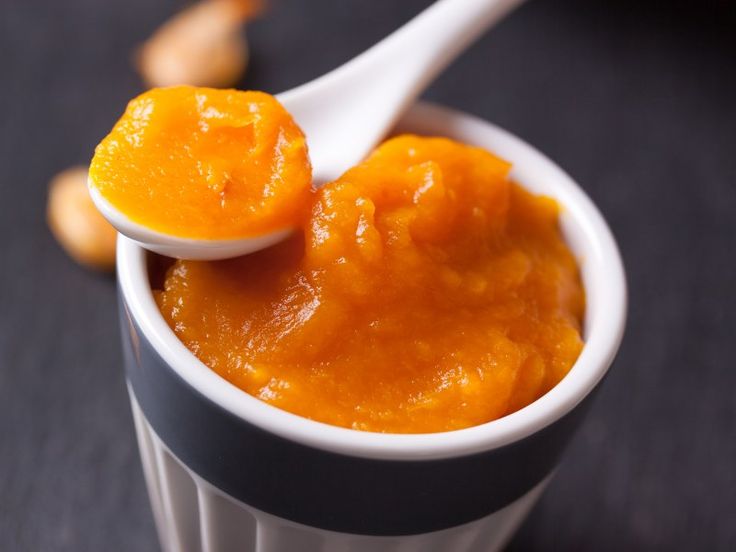 The insides will range from bright yellow to burnt orange, so don’t be alarmed if yours is somewhere in that color range.
The insides will range from bright yellow to burnt orange, so don’t be alarmed if yours is somewhere in that color range. - Thyme or Rosemary: We are kicking up the flavor profile with a fun and fresh herb — thyme or rosemary. Either of these herbs will tone down the earthiness of the squash and ramp up its freshness and citrus aspect. You can’t go wrong with either. But you can always skip adding herbs and spices to your baby food if you prefer (see more below).
Adding Healthy Fats Tip: If you are looking to add some extra healthy fat to your baby’s meals, then you can drizzle the butternut squash with extra virgin olive oil before roasting. Olive oil is a healthy fat that is full of omega 3 and omega 6 that helps baby absorb vitamin D which is important for bone growth and strengthening.
Tools NeededThese tools will make it a lot easier for you to make this healthy Sweet Potato puree. For more of my favorite kitchen tools make sure to check out my online shop.
- Baking Sheet
- Blender or Food Processor
- Knives
- Freezer Tray
- Storage Containers for Fridge
- Stasher Bag
- Bib with catch pocket
- Reusable pouches
- Heat Oven: Preheat the oven and line a baking sheet.
- Prep Squash: Cut the butternut squash in half and scoop out the seeds. Place them on the baking sheet with the flesh side down, and brush with olive oil (optional).
- Bake: Place the baking sheet in the oven and bake until easily pricked with a fork.
- Scrape: Let it cool, and then scrape off the skin until you only have the butternut squash left. Add to the blender or food processor.
- Add Herbs: Add in a pinch of thyme or rosemary to the butternut squash.
- Puree: Turn on the blender and puree until smooth, adding liquids if needed.
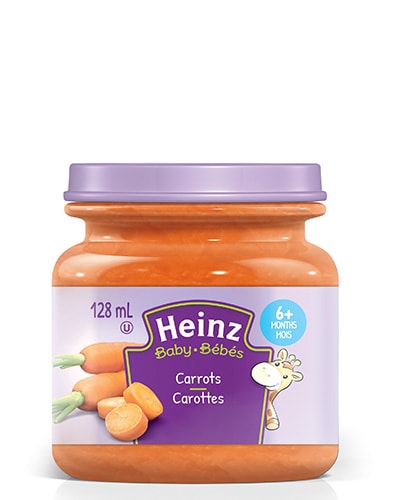
- Serve or freeze for another meal.
While I love the earthly, caramel flavor of roasted butternut squash, there are several ways you can cook butternut squash for baby food.
SteamingPeel and roughly chop 1 butternut squash. Place the cubes into a steamer basket over 2 inches of boiling water for 10-15 minutes or until tender when pricked with a fork. Puree in a blender as directed below.
BoilingPlace 1 peeled and roughly chopped butternut squash into a medium saucepan, add enough water to cover the butternut squash, and bring to a boil. Reduce to simmer and cook for 7-10 minutes or until tender when pricked with a fork. Puree in a blender as directed below. Note that boiling the butternut squash decreases the nutritional value of the puree since a lot of the nutrients are thrown out with the water after cooking.
Saving Time Tip: Steaming or boiling butternut squash are great methods to use if you are using prepared or frozen butternut squash.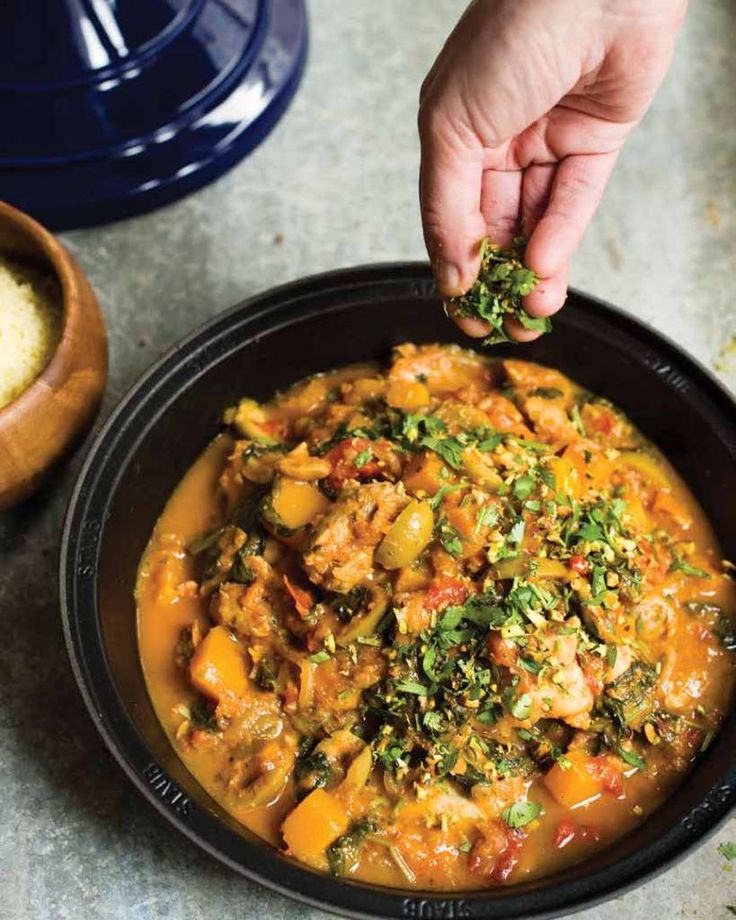 I have found both peeled and cubed fresh or frozen butternut squash in my grocery store, which are both viable options if you are short on time.
I have found both peeled and cubed fresh or frozen butternut squash in my grocery store, which are both viable options if you are short on time.
Frequently Asked Questions
Can butternut squash be baby’s first food
Butternut squash can 100% be your baby’s first food if you want it to be. It is recommended to wait to introduce the top eight allergen foods to your baby once a few other well-tolerated foods have been introduced, but otherwise, foods can be introduced in any order so choose whatever you are most excited for your baby to have.
Is butternut squash a common allergen for baby?
No, butternut squash is not a common allergen, however, as with any food, start with a small portion and be aware of any signs that might be an allergic reaction after introducing it.
When can baby eat butternut squash?
Babies can have butternut squash as one of their first foods. When a baby can start on solids is determined by their own rate of development, which generally comes between 4-6 months of age. Some of the developmental milestones babies need to reach in order to start solids include: if your baby has solid control of their head and neck, if your baby has doubled in weight, and if your baby is reaching for or opening their mouth when you eat (see my guide here). Before you start your baby on purees, you should consult with your pediatrician to make sure your child is developmentally ready.
When a baby can start on solids is determined by their own rate of development, which generally comes between 4-6 months of age. Some of the developmental milestones babies need to reach in order to start solids include: if your baby has solid control of their head and neck, if your baby has doubled in weight, and if your baby is reaching for or opening their mouth when you eat (see my guide here). Before you start your baby on purees, you should consult with your pediatrician to make sure your child is developmentally ready.
Can you add spices or herbs to this baby puree?
Yes! You can add in a pinch of chopped rosemary to this recipe, but feel free to use the following spices instead: basil, cilantro, ginger, nutmeg, coriander, mint, cinnamon, or mild curry powder (see quantity recommendations in the recipe card).
Tip on Spices: I always add spices or herbs to my baby food purees, but you can choose to leave them out in all of your baby food.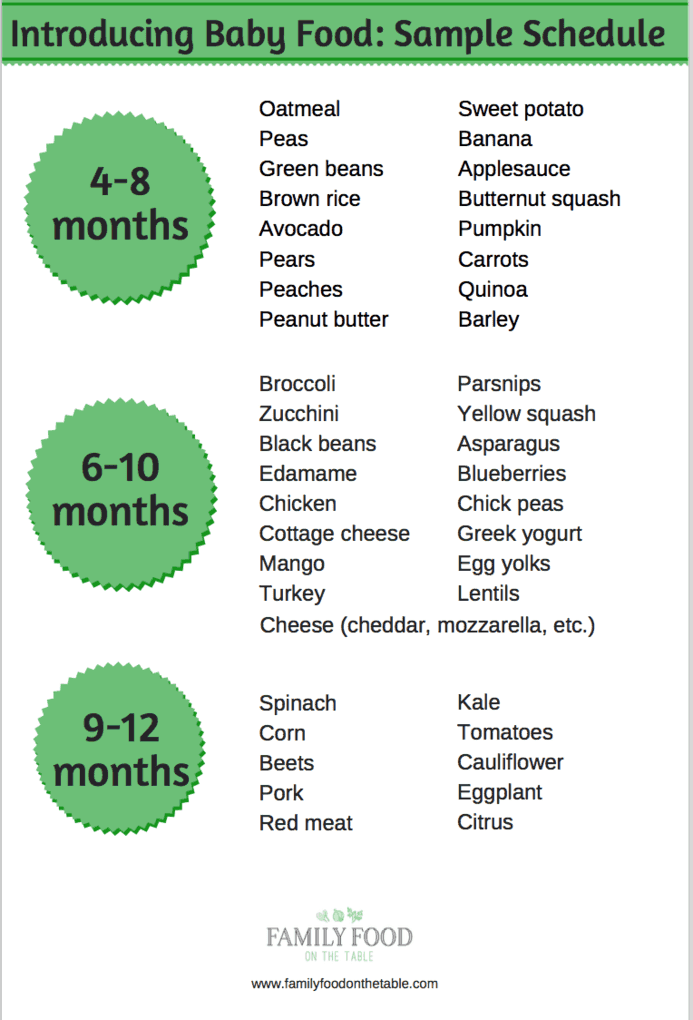 You do you! Either way, this puree will surely taste amazing.
You do you! Either way, this puree will surely taste amazing.
Does butternut squash cause constipation for babies?
Butternut squash, though unlikely, may cause constipation in some babies, so avoid giving too much.
How to Store Butternut Squash Baby FoodRefrigeratorYou can store this puree in an airtight container in the fridge for up to 4 days.
FreezerThis puree can be frozen for up to 4 months.
- Spoon puree into a freezer storage container– do not overfill.
- Place the lid on the storage container or cover with a piece of saran wrap, and label with the date and recipe name.
- Place the tray into the freezer and let it freeze completely — preferably overnight.
- Pop-out the baby food cubes and place them in a ziplock baggie or stasher bag. Don’t forget to relabel the baggie or stager bag for future reference.
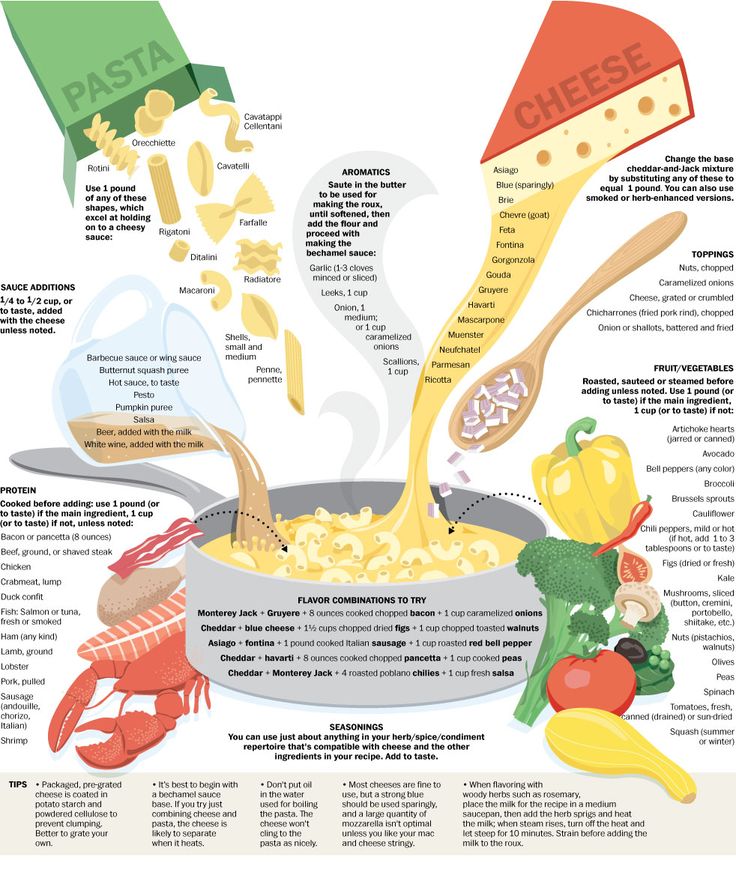
Need more information on how to store your baby foods? Head over to my Best Baby Food Storage Containers – Plus 6 Tips on Freezing and Thawing post!
Label Tip: Don’t forget to label your purees before you place them in the fridge or freezer with the name of the puree and the date you made it. Take it from me; by the end of the week, you will completely forget what is in your freezer and how long it’s been there. 😉
Puree Feeding Tips
- Follow your baby’s lead – when feeding purees from a spoon, sometimes there’s a tendency to keep offering bites past the point of your baby being full. Always follow baby’s cues for when they are done eating. Turning away from the spoon, closing her mouth, or pushing food away are all signs that baby is finished with the meal.
- Trial adding a little seasoning or spice to purees – babies like flavor! Or consider changing the temperature of purees from time to time, to slightly warmed or slightly chilled.
 Varying these aspects adds to the sensory experience!
Varying these aspects adds to the sensory experience! - Place a small amount of puree on the tray during spoon feeding, so that your baby can dip their fingers or hands in the puree. Allowing baby to explore foods in this way helps them learn to self-feed and can help them be more willing to try new textures and foods in the future.
While this butternut squash puree is tasty by itself, it’s also super easy to mix and match with other nutrient-dense baby food purees. So give these fun flavor combos a try!
- Apples
- Carrots
- Pears
- Cherries
- Quinoa Baby Cereal
- Chicken
- Corn
- Sweet Potato
- Soft Tofu
- Pumpkin
- Mango
- Cauliflower
- Yogurt
I’D LOVE TO KNOW HOW IT TURNED OUT! LEAVE A COMMENT AND A ⭐️ RATING BELOW 👇
Or watch a shortened version of the video here.
- 1 butternut squash
- 1 tsp fresh thyme or rosemary, roughly chopped
- 1-2 tsp olive oil (optional)
- 1/2-1 cup liquid (water, fresh breast milk, formula, stock or bone broth)
Preheat: Heat oven to 450 degrees F. Line baking sheet with a silicone mat, tin foil or parchment paper.
Prep: Cut butternut squash in half, deseed and place flesh side up, skin side down on the baking sheet. Optional – feel free to drizzle the squash with 2 teaspoons of olive oil for some added healthy fat.
Roast: Place the baking sheet into the oven and bake for 45-60 minutes or until you can easily prick the squash with a fork.
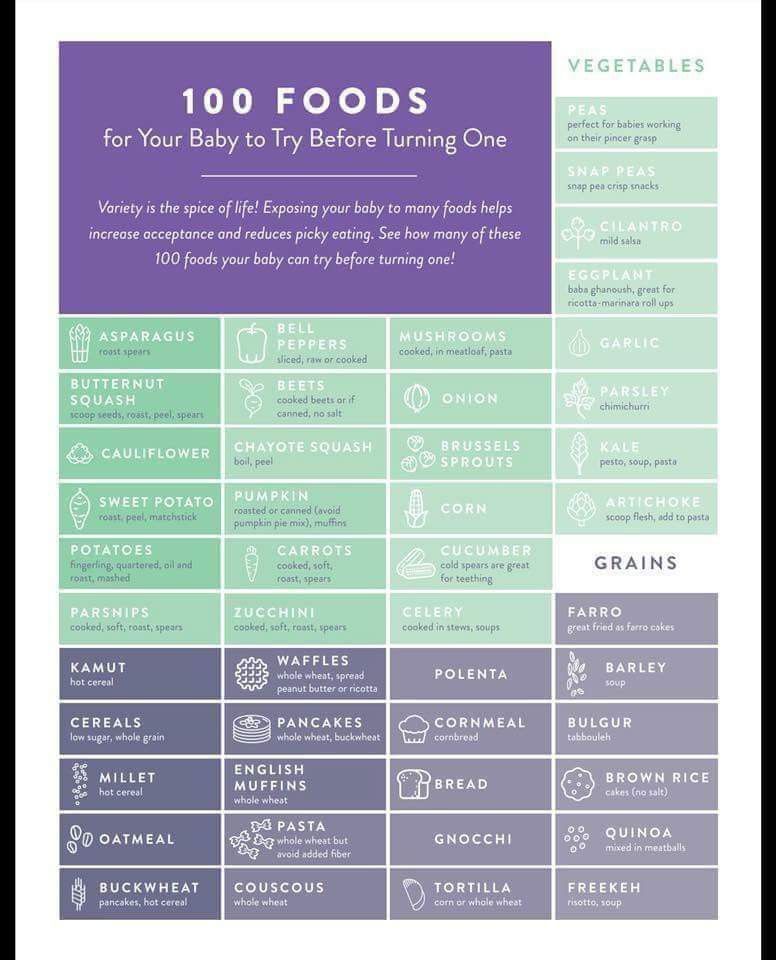
Peel: Let cool until you can handle the squash with your hands. Scrape the flesh off of the skin and place in a blender or food processor.
Add Herbs: Add the thyme or rosemary to the blender.
Puree: Turn on the blender or food processor and puree, adding liquid in 1/4 cup increments until you have the desired consistency. I had to add in 3/4 cup of water to my puree shown below.
Eat: Serve or freeze for later.
Age: 4-6 months and up
Yield: 25 ounces
Additional Spices: Feel free to sub the thyme or rosemary for 4 chopped basil leaves, 1 tsp chopped cilantro, 1/2 tsp minced fresh ginger, 1/2 teaspoon nutmeg, 1/2 tsp coriander, 1/2 tsp cinnamon or even 1/2 tsp of mind curry powder.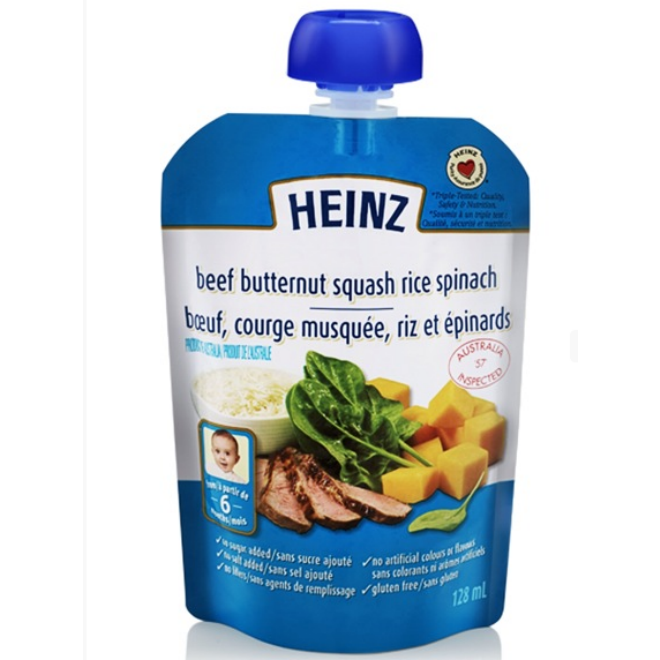
Freezer Tray
Blender
Silicone Baby Bibs
Bumkins Baby Bowl
Tripp Trapp High Chair
GreenPan Cookware
Did you make this recipe?
Tag @babyfoode on Instagram and hashtag it #babyfoode!
Pin Recipe Email a Friend
How long to cook pumpkin for baby puree (for complementary foods)?
Have any of you ever wondered how much good stuff is in pumpkin pulp? These fruits can weigh up to 90 kg. And in each gram there are vitamins, mineral components, micro and macro elements. This product is often introduced into the diet of babies, even as the first complementary foods. Young mothers will be interested to know how much to cook pumpkin for baby puree.
Contents
- 1 How long to cook pumpkin for feeding a baby?
- 2 Tastes better than store-bought puree!
- 2.1 Ingredients:
- 2.2 Preparation:
Closer to six months from birth, babies need complementary foods. Doctors advise paying attention to hypoallergenic products, including pumpkin pulp. How many minutes to boil a pumpkin for a child? If we are talking about cooking in a saucepan, then 10-15 minutes are enough for the pumpkin to become soft and completely ready to eat.
Doctors advise paying attention to hypoallergenic products, including pumpkin pulp. How many minutes to boil a pumpkin for a child? If we are talking about cooking in a saucepan, then 10-15 minutes are enough for the pumpkin to become soft and completely ready to eat.
We will return to the peculiarities of preparing this golden fruit a little later, but now I would like to say a few words about its beneficial properties. What does not fraught with a pumpkin! Bright as the sun, the pulp is enriched with retinol, tocopherol, B vitamins, nicotinic acid, vitamin K. Even in such a product there is the rarest vitamin P. This component is responsible for metabolic processes. It is also essential for the musculoskeletal system.
Note! In complementary foods, such a product is recommended to be introduced at the age of six months. The first "acquaintance" should be small, just one teaspoon is enough.
Despite the great benefits of the vegetable, some children develop an allergic reaction to it. Yes, and overdo it with such a healthy diet is also not worth it. You can add a little pumpkin puree to cereals or mixtures.
Yes, and overdo it with such a healthy diet is also not worth it. You can add a little pumpkin puree to cereals or mixtures.
Pumpkin puree is suitable for mature fruits that appear on store shelves in autumn. The skin should be dense, uniform, without any dents or putrefactive spots. Pay attention to the tail. If it is dry, then the fruit is ripe and can be safely eaten.
Before cooking, the pumpkin is cleaned, leaving only the pulp. Then it is cut into small cubes, poured with filtered water and boiled. The cooking time is recorded from the moment the liquid boils. After the allotted time, the liquid is decanted, and the pulp is mashed using an immersion blender.
How long to cook frozen pumpkin for baby puree? The frozen product loses some of its useful properties, but still it can also be used. The heat treatment time will be about the same. After boiling, cook frozen pumpkin for at least a quarter of an hour.
How long to cook pumpkin in slices for a child in a slow cooker? If you use this kitchen gadget, then it is best to select the program extinguishing mode. Set the timer for half an hour and calmly go about your business. After giving a characteristic sound signal, it remains to drain the water and grind the pulp to a puree consistency.
Set the timer for half an hour and calmly go about your business. After giving a characteristic sound signal, it remains to drain the water and grind the pulp to a puree consistency.
Tip! In puree, you can add a little melted butter or mother's milk.
Steamed pumpkin retains its maximum usefulness. In a double boiler, in a saucepan or in a slow cooker, the duration of steam treatment is at least a third of an hour. It all depends on the size of the pieces. If you cut the pumpkin finely, it will cook faster.
Some mothers bake this fruit in the oven. You will need about 40 minutes for this. The fastest way to cook pumpkin is in the microwave. At maximum power, the pulp will boil in 5-7 minutes.
Pumpkin puree can be preserved. After grinding, the pumpkin mass is boiled for half an hour at a minimum heat, and then immediately laid out in sterilized containers.
Note! Since there are no preservatives in canned homemade pumpkin puree, it must be stored in a refrigerator.
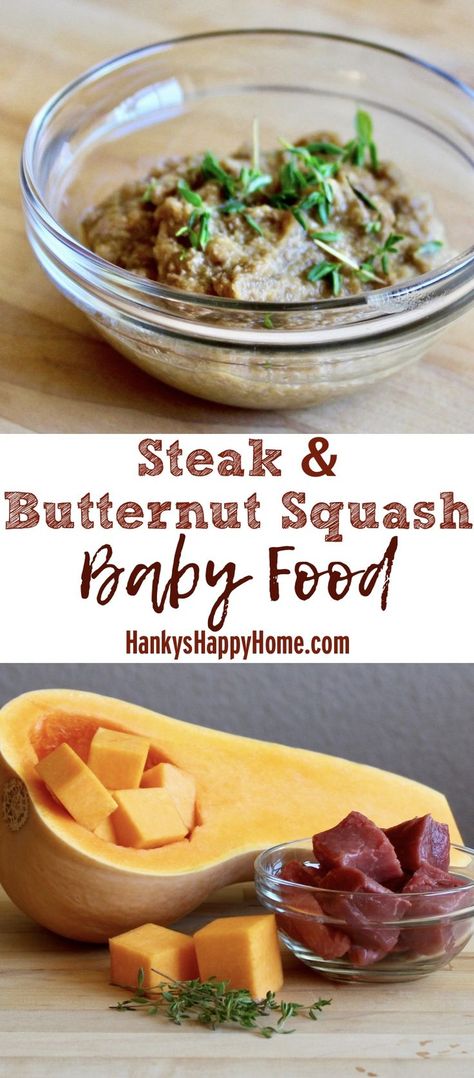
Not only children, but also adults will enjoy the sweet taste of this wonderful fruit. You just need to learn how to cook pumpkin properly, and this dish will become the most popular on your table.
Tastes better than store-bought puree!
Every mother, without exception, can prepare pumpkin puree for her baby. If you are already slowly introducing new foods into the baby’s diet, but add a little granulated sugar, refined olive fruit oil, and salt to the pumpkin puree.
It is important to choose a quality fruit that is ripe but not overripe. Due to the thick skin, the pumpkin is perfectly stored without a refrigerator for a long time. Therefore, you can cook such treats for your child all year round.
Ingredients:
- pumpkin pulp - 300 g;
- refined olive fruit oil - a couple of teas. spoons;
- granulated sugar - one teaspoon. a spoon;
- salt - ½ tsp. spoons;
- filtered water.

Preparation:
- Peel the pumpkin with a vegetable peeler.
- Cut the fruit and remove the seeds along with the fibers. Cut pumpkin pulp into medium-sized cubes.
- Transfer the pumpkin pulp to a saucepan or saucepan with a thick bottom.
- Fill with filtered water so that the liquid completely covers the product.
- Bring the liquid to a boil over moderate heat. Then we reduce the fire and detect a quarter of an hour. This is how long it takes for the pumpkin to cook.
- Cool the cooked pumpkin, you can immediately drain the water from it.
- Transfer the pumpkin pulp to the container of a blender or food processor.
- Add crystal sugar.
- Enter some salt.
- Add a couple of tablespoons of refined olive oil. You can use corn, linseed or other oil of your choice.
- Now carefully grind the pumpkin pulp so that the puree acquires a uniform consistency.
- For variety, you can add a little boiled chicken breast.
 After that, you need to beat the puree again.
After that, you need to beat the puree again. - Kids will enjoy this dish with pleasure. If you give puree to a six-month-old baby, it must be heated in a steam bath to a temperature of 36-37 °.
See also:
- How long to cook green beans?
- How long to cook red beans?
- How long to cook barley without soaking?
Pumpkin is a wonderful product that nature has given us. Pumpkin puree is an ideal food for crumbs in the first year of life. Having prepared mashed potatoes at home, you will be 100% sure of its naturalness and benefits, unlike store-bought products. Enjoy your meal!
The article belongs to the site whattimes.ru When copying a link to the source is required.
Steamed baby pumpkin puree recipe with photo
Difficulty of preparation: Easy
Preparation time: to 1 hour
Vegetarianism: No
Kitchen: do not belong
Solcopts: 20 Portations
DISPECTION TYPE: DISCOUTIONS 9000
.

Pumpkin
(500 g)
Olive Oil
(10 ml)
Bouillon
(200 ml)
Water
(1 l) 90 08 Steamed pumpkin puree recipe step by step
Pumpkin is one of the foods that babies should try during their first year of life. Many pediatricians consider 6-6.5 months to be the ideal period for introducing this vegetable. The advantage of pumpkin is certainly its rich composition, it is a storehouse of useful nutrients: vitamins and microelements contribute to the timely development of the child's body, have a positive effect on the nervous system, provide restful sleep, and help strengthen the immune system. Pumpkin also contains a sufficient amount of beta-carotene, which has a significant positive effect on ensuring healthy vision of the crumbs. Pumpkin contains a lot of water and easily digestible fiber, which is very important for the normal digestion of a child. After tasting commercially produced pumpkin puree, my baby began to grimacing and spitting. So I decided to make my own puree. To make puree, we need: pumpkin, water, pumpkin broth, olive oil. Wash pumpkin thoroughly before cooking.
After tasting commercially produced pumpkin puree, my baby began to grimacing and spitting. So I decided to make my own puree. To make puree, we need: pumpkin, water, pumpkin broth, olive oil. Wash pumpkin thoroughly before cooking.
Next, peel the pumpkin and remove the seeds from the core.
Cut into small cubes and put on a multicooker sieve. Pour boiled water into the multicooker bowl, and set the "Steaming" mode for 20 minutes.
Place the finished pumpkin in a blender glass, add the pumpkin broth (from the multicooker bowl) to obtain a more liquid consistency and beat until smooth. It is imperative to achieve a homogeneous state for our puree, since the sensation of hard lumps in the baby's mouth can cause discomfort, and in some cases even a gag reflex.
For better digestion and bowel function, add olive oil and mix thoroughly.
Now our puree is ready and you can feed your baby. In view of the fact that we have a fairly large volume, pumpkin puree must be decomposed into special molds and put in the freezer. Pumpkin puree can be combined with various vegetables and fruits: apple, banana, carrot. Also, closer to 8-9 months, the baby can try a combination of pumpkin puree with cereals such as buckwheat, oatmeal, wheat. Bon appetit to your kids!
Pumpkin puree can be combined with various vegetables and fruits: apple, banana, carrot. Also, closer to 8-9 months, the baby can try a combination of pumpkin puree with cereals such as buckwheat, oatmeal, wheat. Bon appetit to your kids!
Dish analysis based on ingredients
product
protein
fat
carb.
kcal
pumpkin
5
1
22
110
olive oil
10
90
Bullet
7
9000 9000 9000 9000 9000 9000 9000 9000 1 9000 3000 1 9000 3000 1 9000 3000 1 9000 3000 1 9000 3000 1 9000 3000 1 9000 3000 1 9000 3000 1 9000 3000 1 9000 3000 1 9000 3000 1 9000 3000 1 9000 3000 1 9000 3000 1 9000 3000 1 9000 3000 1 9000 3000 1 9000 3000 1 9000 3000 1 9000 3000 1 9000 3 per dish:12
14
23
256
only in 1 portion:
1
1
1
13,0002
only 100 grams:
1
1 9000 9000 1
15000 15 15000 155000 15
recipe author: Katerina180983794769 Katerina
publication date: 03.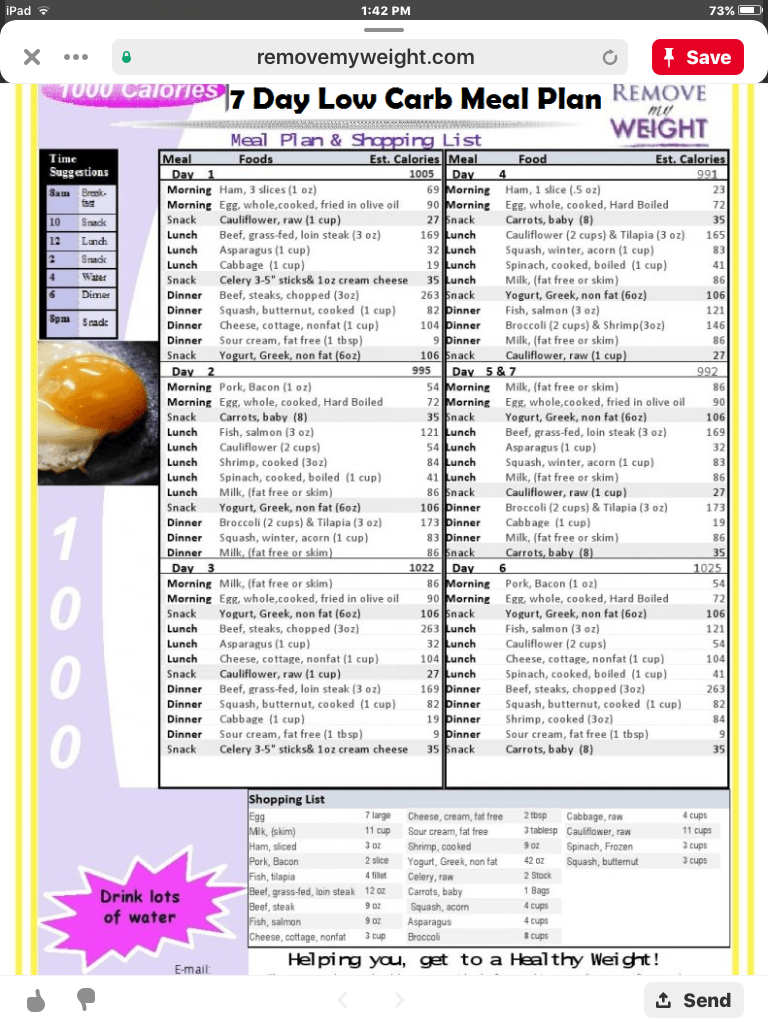







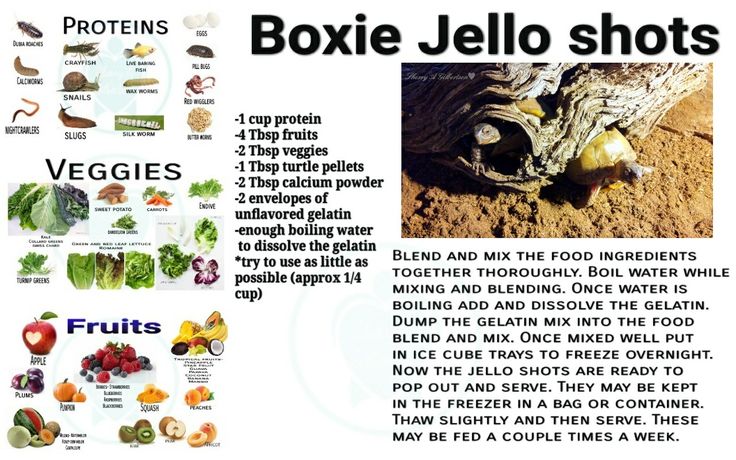

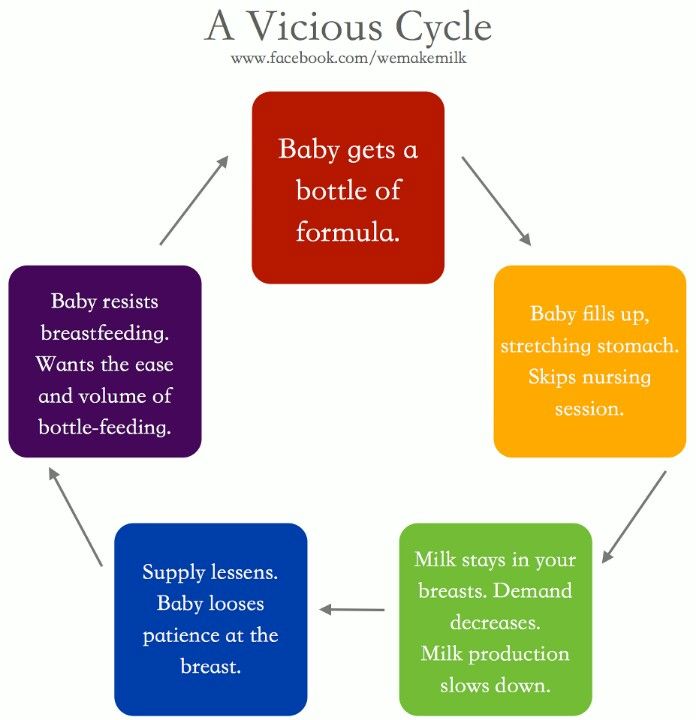
/imgs/2020/05/29/12/3933015/7cf142452ac7f89551afc432db0e634f8b6b47e5.jpg)